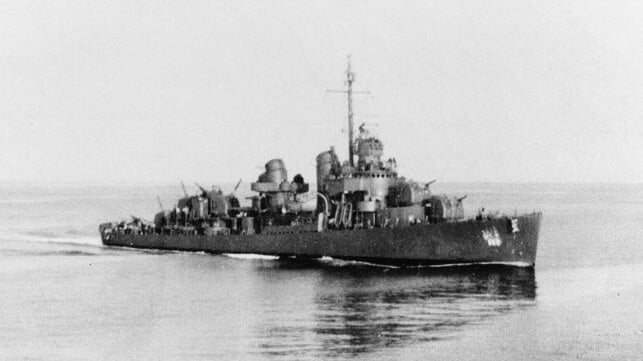RV Nautilus Finds Ship's Bell of Lost WWII Destroyer USS De Haven

The privately-run research vessel Nautilus has found the ship's bell of the lost frigate USS De Haven, the latest in a series of discoveries in a survey of "Iron Bottom Sound," a channel in the Solomon Islands that saw heavy combat during World War II.
USS De Haven (DD-469, often spelled DeHaven) was a Fletcher-class destroyer, a successful vessel design that was built by the dozen during the war. Commissioned in September 1942, De Haven immediately departed for the Solomon Islands campaign, which was already in full swing. She escorted a convoy of troopships to Guadalcanal, then patrolled the archipelago to interdict Japanese forces for the next several months. The famous and costly naval engagements off Guadalcanal and Savo Island were long over by that point, but Japanese air forces still posed a serious threat.
On February 1, 1943, De Haven was escorting a small group of landing craft and a seaplane tender to a new beachhead on Guadalcanal. As she returned to base with two of the landing craft, nine Japanese planes approached, and six turned to attack her. De Haven was hit by three bombs, killing the commanding officer and sending the ship to the bottom just off Savo Island. 167 crewmembers lost their lives in the sinking.
De Haven's wreck was discovered by Dr. Robert Ballard in 1992, and the RV Nautilus returned to the site in July to re-survey the vessel. With assistance from live-stream video viewers, the team found the ship's bell, one of the most iconic elements of any shipwreck. The bell was dislodged from its mount and was resting atop a torpedo mount amidships. Signs of deterioration and marine life colonization suggest that the timing of the find was lucky: some areas of the wreck have become heavily encrusted, and one of the other torpedo mounts has tilted due to deck collapse since the last survey.
The team also conducted the first ever wreck exploration of USS Walke, a Sims-class destroyer that went down off Savo Island during the Second Naval Battle of Guadalcanal (Nov. 15, 1942). Walke fired off about 300 five-inch rounds at three Japanese warships in the pitched nighttime battle; she was hit by a torpedo in return, then by multiple rounds of shells. As she went down, her depth charges detonated, killing survivors in the water. The ROV exploration shows the ferocity of the fight: the bridge had been blown off and was found separately, and only about half of the length of the hull could be identified as a single structure. Both the bow and stern were missing.
